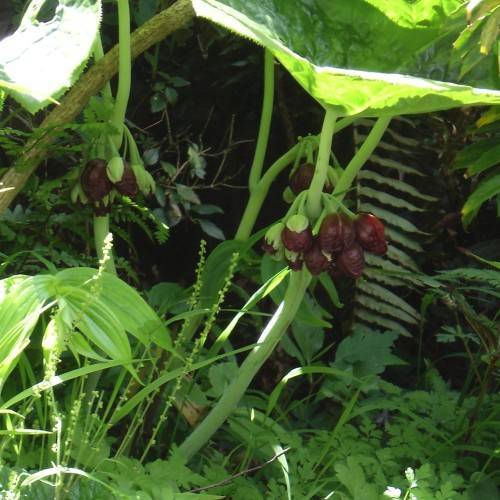
dysosma
Podophyllum pleianthum
Cycle:
Herbaceous Perennial
Watering:
Average
Hardiness Zone:
6 - 8
Flowers:
Flowers
Sun:
Part shade,full shade
Leaf:
Yes
Growth Rate:
Low
Maintenance:
Moderate
Poisonous To Humans:
Yes
Poisonous To Pets:
Yes
Drought Tolerant:
Yes
Salt Tolerant:
Yes
Care Level:
Medium
watering
Dysosma should be watered regularly, about once every week during the growing season. During the summer months, the soil should be kept slightly moist. During the winter, it can tolerate brief periods of dryness, but should not be allowed to completely dry out or become waterlogged. When watering, a thorough but gentle soaking is recommended. Make sure to let the excess drain out the bottom of the pot. The soil should not be allowed to become waterlogged.
sunlight
Dysosma (Podophyllum pleianthum) is a shade-loving plant species that thrives best in indirect sunlight. In their natural habitat, they are usually found growing beneath or at the edge of larger foliage. They should receive no more than 2 or 3 hours of morning sunlight each day. Direct sunlight for periods longer than this can cause the leaves to become burned or discolored. Direct sunlight in the afternoon should always be avoided. To ensure healthy growth, nurture your Dysosma with dappled or bright indirect light throughout the day.
pruning
Dysosma (Podophyllum pleianthum) should be pruned in the late winter or early spring, before the spring growth begins. Prune out any dead, damaged, or crossing branches and remove any branches growing from the base or lower on the plant. This will help open up the canopy so more light can reach the foliage on the inside. Also, remove any flower stalks and seed heads to encourage more blooms in the spring. Choose selective cuts to shape the plant and remove branches that are too close to the ground or that are growing in areas that are overcrowded. Pruning will also help ensure that the plant maintains its proper shape and size.
